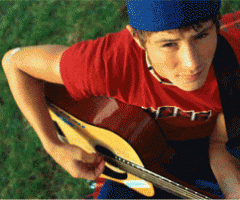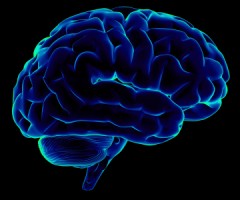The term Autism Spectrum disorders is also known as “Pervasive Developmental disorders” refers to a group of conditions that involve delays in the development of many basic skills.Pervasive developmental disorders, most often, can be identified in the early years of a child’s life. Children with PDD have difficulty in areas of development or use of functional skills such as language, communication, socialization, imagination, and motor behaviors.
Pervasive developmental disorder” (PDD) is the umbrella-like term used to describe a group of developmental disorders that fall under it. That group includes autism, PDD-NOS (pervasive developmental disorder not otherwise specified), Asperger’s syndrome, Rett’s Syndrome and childhood disintegrative disorder. The later two are very rare conditions. The autism spectrum disorders can often be reliably detected by the age of 3 years, and in some cases as early as 18 months.
The specific developmental areas that can be affected by any of the diagnoses within the PDD family can include: speech and/or language, social skills, motor skills, sensory differences, repetitive behaviors, impaired relationship building, and inappropriate emotional reactions. It is important to know that not all individuals will be affected in all of these areas. The degree of affectedness differs for each individual, varying from mildly affected to severely affected within each area, and no two individuals will have the same profile. For example, a person who is very severely affected socially, can have superior cognitive (learning) skills, and the reverse could be true for another individual with the very same diagnosis.
Autistic Disorder
Autism is a complex developmental disability that causes problems with social interaction and communication. Symptoms usually start before age three and can cause delays or problems in many different skills that develop from infancy to adulthood.
The symptoms of Austistic Disorder involve:
- Communication – both verbal (spoken) and non-verbal (unspoken, such as pointing, eye contact, and smiling)
- Social – such as sharing emotions, understanding how others think and feel, and holding a conversation
- Routines or repetitive behaviors (also called stereotyped behaviors) - such as repeating words or actions, obsessively following routines or schedules, and playing in repetitive ways
The symptoms of autism can usually be observed by 18 months of age.
Asperger’s Syndrome
Asperger’s syndrome is a developmental disorder that affects a person’s ability to socialize and communicate effectively with others. Children with Asperger’s syndrome typically exhibit social awkwardness and an all-absorbing interest in specific topics.
The symptoms of Asperger’s syndrome vary and can range from mild to severe. Common symptoms include:
- Problems with social skills: Children with Asperger’s syndrome generally have difficulty interacting with others and often are awkward in social situations. They generally do not make friends easily.
- Eccentric or repetitive behaviors: Children with this condition may develop odd, repetitive movements, such as hand wringing or finger twisting.
- Unusual preoccupations or rituals: A child with Asperger’s syndrome may develop rituals that he or she refuses to alter, such as getting dressed in a specific order.
- Communication difficulties: People with Asperger’s syndrome may not make eye contact when speaking with someone. They may have trouble using facial expressions and gestures, and understanding body language. They also tend to have problems understanding language in context.
- Limited range of interests: A child with Asperger’s syndrome may develop an intense, almost obsessive, interest in a few areas, such as sports schedules, weather, or maps.
- Coordination problems: The movements of children with Asperger’s syndrome may seem clumsy or awkward.
- Skilled or talented: Many children with Asperger’s syndrome are exceptionally talented or skilled in a particular area, such as music or math.
Pervasive Development Disorder NOS
This diagnosis applies to children on the autism spectrum, but not falling within any of the existing specific categories of autism.
Autism symptoms in kids with PDD-NOS vary widely, making it hard to generalize. No two children with PDD-NOS are exactly alike in their symptoms. There are no agreed-upon criteria for diagnosing PDD-NOS. In effect, if a child seems autistic to professional evaluators but doesn’t meet all the criteria for autistic disorder, he or she has PDD-NOS. Overall, compared to children with other autistic spectrum disorders, children with PDD-NOS have:
- impaired social interaction — like all children with autistic spectrum disorder
- better language skills than kids with autistic disorder, but not as good as those with Asperger’s syndrome
- fewer repetitive behaviors than children with Asperger’s syndrome or autistic disorder
- a later age of onset
Rett Syndrome
Rett syndrome is relatively rare, affecting almost exclusively females, one out of 10,000 to 15,000. After a period of normal development, sometime between 6 and 18 months, autism-like symptoms begin to appear. The little girl’s mental and social development regresses—she no longer responds to her parents and pulls away from any social contact. If she has been talking, she stops; she cannot control her feet; she wrings her hands. Some of the problems associated with Rett syndrome can be treated. Physical, occupational, and speech therapy can help with problems of coordination, movement, and speech.
Childhood Disintegrative Disorder
Very few children who have an autism spectrum disorder (ASD) diagnosis meet the criteria for childhood disintegrative disorder (CDD). It has a strong male preponderance. Symptoms may appear by age 2, but the average age of onset is between 3 and 4 years. Until this time, the child has age-appropriate skills in communication and social relationships. The long period of normal development before regression helps differentiate CDD from Rett syndrome.
The loss of such skills as vocabulary are more dramatic in CDD than they are in classical autism. The diagnosis requires extensive and pronounced losses involving motor, language, and social skills. CDD is also accompanied by loss of bowel and bladder control and oftentimes seizures and a very low IQ.






